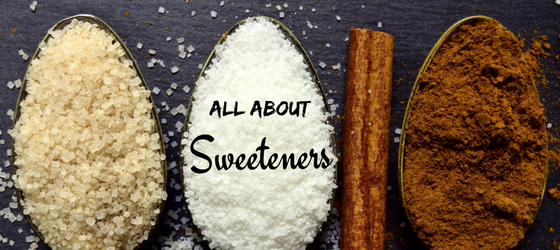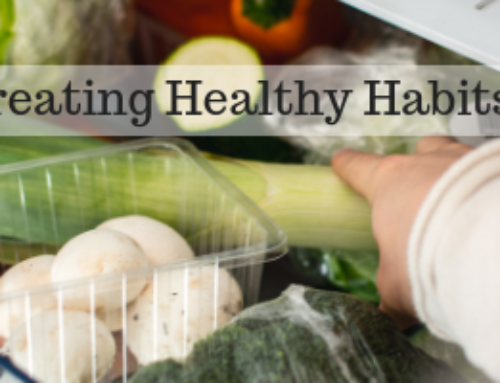It’s November, which for most of us in North America, signals the beginning of a season full of eating. A lot of this eating includes sweets. So, I thought this might be a good time to gently remind you that your body doesn’t go on holiday. Watching your sugar intake over the holiday season is essential to your health and will be a big bonus for you come January.
When it comes to the digestion and metabolism of carbohydrates, the one thing you must remember is that all carbohydrates (except for fiber, and yes fiber is technically a carbohydrate) turn into sugar. That means that the carbs contained even in those veggies turn into sugar eventually. Now, I’m not worried about the carbs in vegetables, and you shouldn’t be either because they have very little impact on blood sugar. Plus, they come packed with nutrients that support your health. The carbs to be concerned about are those that come in the form of straight sugar (corn syrup, cane sugar) and those carbs that convert into sugar rapidly in your GI track like most breads and refined grains.
For this post, we are going to look at carbs that may be used as sweeteners. I find there can be a lot of confusion over sweeteners — which ones are good, which ones are bad, and which are okay in small amounts. Let’s break it down.
What Sweeteners to Lose
Plain old sugar, aka refined sugar. There are many names for sugar, and I’ve included a list below. These sweeteners have almost zero nutritional value, (except for calories – which most of us don’t need more of), spike blood sugar and can be converted into fat quite effectively. I don’t think I need to tell you to avoid sugar as a sweetener, but some people may not be aware of all the names that sugar can be disguised as – so I’ve provided a list below. Also, don’t forget to read ingredient labels on packaged foods where you can often find these sugars hiding.
Examples — sugar, brown sugar, raw sugar, dehydrated cane juice, dextrose, glucose, barley malt, maltose, coconut sugar, date sugar, golden syrup, palm sugar, sucrose. And of course fructose — which we should study even closer.
Fructose and sweeteners high in fructose. Fructose is an odd-ball when it comes to sugars. See, when it is digested, it is sent directly to the liver, bypassing general bloodstream circulation. Sounds like a good thing since this prevents spikes in blood sugar, right? Well, not so quick. See fructose is sent directly to the liver to be metabolized, where it is either converted into glucose or more likely converted into triglycerides, aka — fat. Unless you are a super active person, the likelihood of you needing extra glucose is low, thus the fructose is more likely converted into fat. High fructose intake, especially from sweets and sugary beverages, is associated with high triglycerides, which increases the risk for cardiovascular disease. As well, excess fructose consumption is a major contributor to insulin resistance, which sets the stage for all kinds of issues such as elevated blood sugars, diabetes, and increased fat in the abdominal region. It even contributes to fatty liver!
Examples: fructose, high-fructose corn syrup, corn syrup, agave syrup, fruit juice concentrate, commercial honey
Yes, there is fructose in fruit, but I don’t want you to give up fruit. The body is able to metabolize some fructose, and that fructose should come in the form of fruit, which comes packaged with fiber and nutrients. If you do need to watch sugars in fruit, then check out my article “Is the Fruit You’re Eating a Sugar Bomb?” to hone your diet even more. A general rule of thumb is to avoid fruit juice and dried fruit (both super high in sugar) and stick to one – two servings of fruit per day to keep your fructose intake in check. Berries are my favorite fruit to suggest because they are low sugar, high fiber, and high in antioxidants.
Artificial Sweeteners. Yes, artificial sweeteners don’t have calories, and they have been touted as a healthy alternative to regular sugar, but are they? We have known for some time that that those who consume artificial sweeteners don’t necessarily have lower calorie intakes. Artificial sweeteners are often 100x sweeter than sugar. In fact, aspartame (Equal) is 200x sweeter than sugar, and saccharin (Sweet ‘n’ Low) is 300x sweeter than sugar! New research from the Canadian Medical Association Journal found that consumption of these sweeteners was associated with a modest long-term weight gain, and individuals that used them regularly showed higher risks for Type 2 diabetes and hypertension. New evidence is also showing that artificial sweeteners alter your gut microbiome (the good bacteria that live in your gut) in a negative way, leading to glucose intolerance. Bottom line, avoid them.
Examples: aspartame, saccharin, sucralose, acesulfame potassium (Ace-K)
Stay tuned for part two of this series on sweeteners, when I dive deeper and tell you which sweeteners to choose – a must read to help you stay on track over the holiday season.
You can read part two here: Sweeteners – continued.
As always, if you found this information helpful, please share with family and friends.






